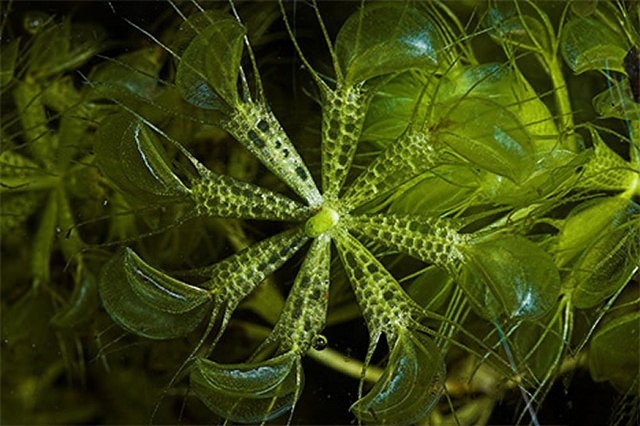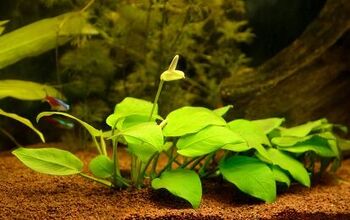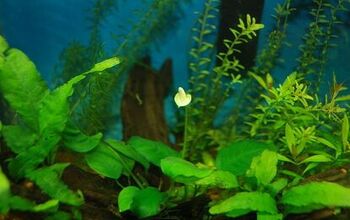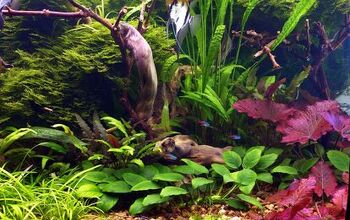Keeping Carnivorous Plants in Your Home Aquarium

When you are ready to stock your planted aquarium, you probably think about some of the more common species like Cryptocorynes and Anubias. Many aquarium hobbyists do not even realize that carnivorous aquarium plants exist, but they do! And they can be a unique addition (not to mention a challenging one) for the home aquarium.
Types of Carnivorous Plants
Do not let the word “carnivorous” throw you off – these plants are unlikely to eat the fish in your aquarium. Carnivorous aquarium plants typically feed on zooplankton and other microorganisms. Some plants may be capable of eating newly hatched fry or very small insects, but for the most part you do not have to worry about the safety of anything larger than brine shrimp with your carnivorous plants.
Related: Exploring The Riparium
Here’s a list of some carnivorous plants that you can keep in your planted tank:
- Common Bladderwort (Utricularia vulgaris): This is the most common bladderwort species kept in the home aquarium, hence the name “common” bladderwort. This species can be found throughout Asia and Europe and it is very similar in appearance to Cabomba, with its thread-like leaves. This species can grow up to 30 feet long but its flowers and traps are very small.
- Waterwheel (Aldrovanda vesiculosa): This species is found throughout Africa, Asia, Europe and Australia, though it is a fairly uncommon plant. Waterwheel is a floating plant and its leaves grow in whorls around each small trap – this is what gives the species its name. These plants feed on zooplankton like Daphnia and mosquito larvae, though their large traps are capable of ensnaring very small fish.
- Floating Bladderwort (Utricularia gibba): As the name would suggest, this species is a type of floating plant that forms large mats on the surface of the water. Floating bladderwort produces bright yellow flowers and they are fairly easy to cultivate in the aquarium with adequate lighting.
- Purple Bladderwort (Utricularia purpurea): This species is named for the purple coloration of its flowers. The purple bladderwort feeds on a mixture of algae, bacteria, and zooplankton. This species is found throughout Central and North America.
These are just a few carnivorous aquarium plants that you might consider for your planted tank – they are also the most popular species which makes them the species most likely to be found in a pet store or online from an aquarium supplier.
Related: How to Use Aquatic Mosses in Your Planted Tank
Tips for Keeping Carnivorous Plants
When you hear the word carnivorous, you probably think of meat-eating animals. When the word is used to describe aquatic plants, however, this may not be the case. Most carnivorous plants feed on microorganisms like zooplankton and daphnia – some of the larger plants may even be able to consume a few newly-hatched fry. In most cases, the carnivorous diet of certain plants is an adaptation made necessary by low nutrient levels. Carnivorous plants cannot compete with other plants, so they are most likely to thrive in nutrient-poor conditions where other plants cannot survive. This is why most carnivorous plants are found in bogs and other similar natural environments.
As is true with any live plant, you need to do your research before adding them to your aquarium in order to make sure that you can meet the plant’s needs. Carnivorous plants like bladderworts and waterwheels have different needs than most aquarium plants so be very careful when choosing them for your tank. You may not need to worry so much about adequate lighting or nutrients, but every plant species has its own set of requirements that need to be met in order for it to thrive.

Kate Barrington is the loving owner of two cats (Bagel and Munchkin) and a noisy herd of guinea pigs. Having grown up with golden retrievers, Kate has a great deal of experience with dogs but labels herself a lover of all pets. Having received a Bachelor's degree in English, Kate has combined her love for pets and her passion for writing to create her own freelance writing business, specializing in the pet niche.
More by Kate Barrington























